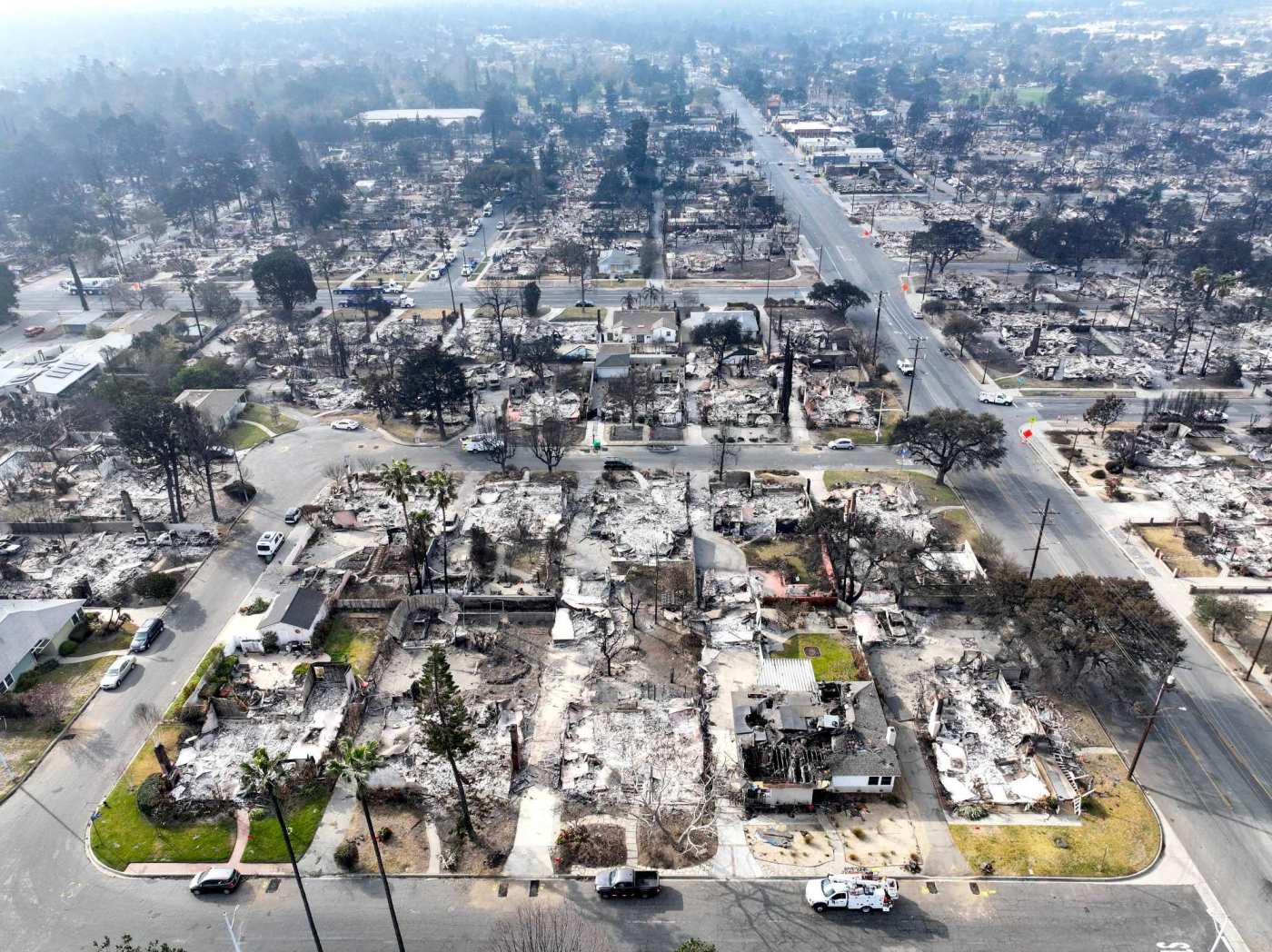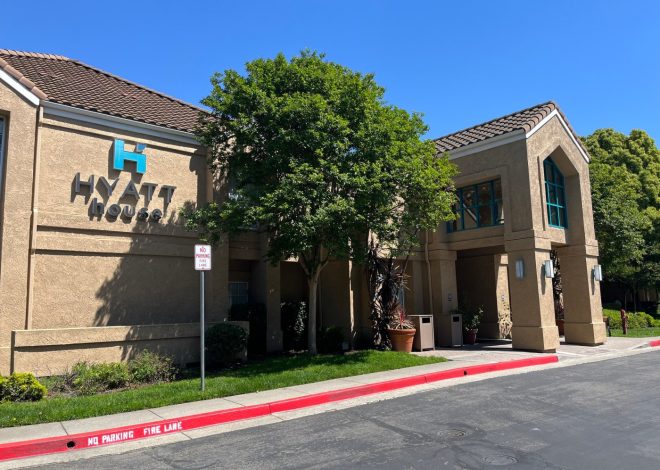
Trump’s claims about California water and L.A. fires are inaccurate and misleading, experts say
President Trump visited fire-ravaged neighborhoods in Los Angeles late Friday, continuing to claim without evidence that California’s water polices led to the devastation, and threatening to withhold federal aid to fire victims unless they are changed.
“We’re going to go to Los Angeles and take a look at a fire that could have been put out if they let the water flow, but they didn’t let the water flow,” Trump said Friday morning in Washington D.C. “And they still haven’t for whatever reason.”
Aa news conference Tuesday, Trump made a related claim: “Los Angeles has massive amounts of water available to it. All they have to do is turn the valve, and that’s the valve coming back from and down from the Pacific Northwest.”
The day after the fires began, Trump posted a statement on Truth Social saying “Gov. Gavin Newscum” was to blame for the carnage because “he wanted to protect an essentially worthless fish called a smelt” in the Sacramento-San Joaquin River Delta, 325 miles away, depriving L.A. firefighters of water.
The trouble is, experts say, Trump’s assertions are wildly incorrect.
There is no “valve” that moves water from the Pacific Northwest into California. There is no shortage of water in Southern California. On Friday, all of the major reservoirs in Southern California were above their historic average levels, with the largest, Diamond Valley, 97% full.
“This has been debunked over and over again in the past two weeks,” said Peter Gleick, president emeritus of the Pacific Institute, a non-profit water research center based in Oakland. “There is zero connection between firefighting water needs and California’s water policy … He’s simply repeating lies.”
The massive fires that began Jan. 7 in Pacific Palisades, Malibu and Altadena have killed at least 28 people and burned more 16,200 homes and businesses. The damage estimates could top $250 billion, the forecasting company Accuweather has estimated.
Since last May, experts note, Los Angeles has received only 0.16 inches of rain, the second-driest such period in its history. Some rain is finally forecast this weekend. But since Oct. 1, Los Angeles has received just 3% of its historic average rainfall, compared with 90% for San Francisco.
Add to that, the region was slammed with Santa Ana winds that came from the east with hurricane force, hitting 80 to 100 mph. As a result, firefighters’ helicopters and planes couldn’t fly. Video showed flames burning sideways as they roared through bone-dry neighborhoods.
“I’m disappointed people are focusing on the water issues,” said Craig Clements, director of the Fire Weather Research Laboratory at San Jose State University. “I don’t think it would have made a difference with 80 mph winds. These are fires that just can’t be put out in those extreme conditions.”
During the fires, hydrants ran dry in some neighborhoods.
The Los Angeles Department of Water and Power said it filled all 114 of its water storage tanks in the days before the fires. But water demand quadrupled when the blazes broke out, and three 1-million tanks in the Pacific Palisades hills ran dry, causing water pressure to dry up in about 20% of the hydrants. The Los Angeles Times later reported that the department had drained a small local reservoir in the hills above Pacific Palisades, Santa Ynez Reservoir, for repairs last February, and it remained empty.
Last Friday, Gov. Gavin Newsom sent a letter to Janisse Quiñones, CEO of the department, demanding a detailed accounting and announcing the state Department of Water Resources will launch an investigation.
“We need answers,” Newsom wrote.
Experts said with the extreme winds spreading flames and no aircraft water drops, the city’s infrastructure was overwhelmed. As climate change increases fire danger in the years ahead, they said, cities in fire-prone areas will need to toughen building codes, and consider expanding hydrants, water tanks and pumps.
“An urban water system is built to handle a house fire, a building fire, or an electrical fire,” said Gregory Pierce, co-director of UCLA’s Water Resources Group. “Urban water systems are not designed to fight wildfires and put out mountainsides.”
Billionaire Rick Caruso, who ran unsuccessfully for L.A. mayor last year, placed the blame on city officials and Mayor Karen Bass, who was in Ghana when the fires began.
“We’ve got more than enough water in my opinion,” Caruso, who served on a city commission overseeing public works, told the Washington Post. “How the water was deployed was the issue.”
Trump’s reference to the Delta smelt centers on a decades-old water battle in California between cities, farmers and the environment. In the 1990s, state and federal agencies listed the tiny 3-inch fish as endangered. As its numbers dropped, along with numbers of salmon, in the Delta, court decisions reduced the amount of water that could be pumped at times from Northern California to farms in the Central Valley and cities from San Jose to San Diego.
Trump loosened federal pumping rules at the request of farmers in 2019 when he last was president. Newsom opposed those changes. Trump said at an L.A. campaign stop in September that unless his rules are imposed California won’t get federal disaster aid for wildfires. He has repeated that in recent days.
But Congress approves the aid, which is normally a bipartisan effort. President Biden and Democrats supported aid to Florida, a Republican state, after Hurricane Helene last fall. Now some California Republicans don’t want any conditions put on wildfire aid.
“Providing relief in the aftermath of a natural disaster isn’t a red or blue issue — it’s a life-or-death issue,” Republican Rep. Young Kim, who represents nearby Orange County, posted on social media Tuesday.


